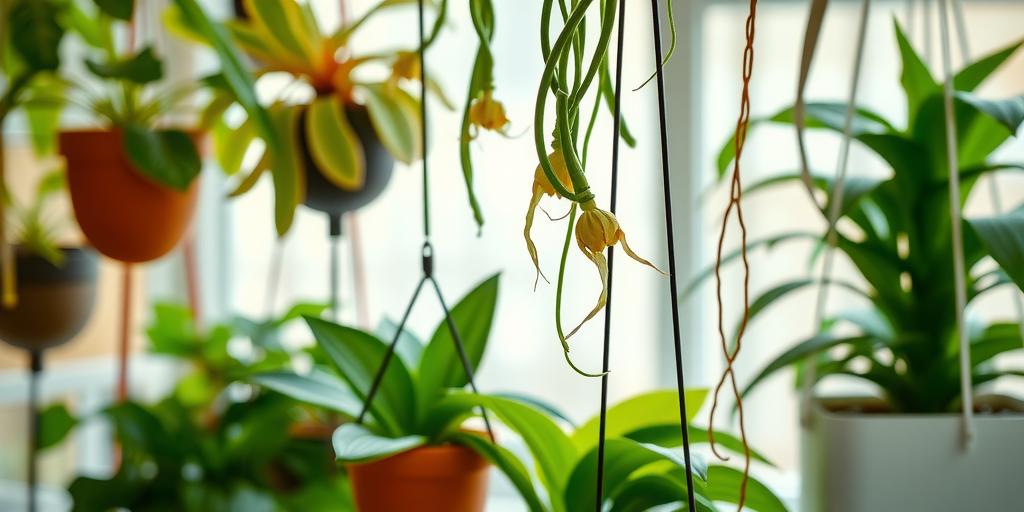
The Best Fertilizer for Hanging Plants: A Complete Choosing & Using Guide
Discover the best fertilizer for hanging plants to keep them thriving! Learn how to choose, apply, and optimize plant food for lush, healthy growth in baskets and containers.
Introduction
Did you know that hanging plants can lose nutrients up to 30% faster than their potted counterparts? Without the right fertilizer, your beautiful ferns, petunias, and ivy might struggle to stay vibrant. But don’t worry—picking the perfect plant food doesn’t have to be complicated! In this guide, we’ll break down everything you need to know about fertilizing hanging plants, from organic options to slow-release formulas. Whether you’re a beginner or a seasoned plant parent, you’ll walk away with expert tips to keep your greenery flourishing.
Why Hanging Plants Need Special Fertilizer
Hanging plants face unique challenges that make their fertilizer needs different from their potted or in-ground counterparts.
Unique Challenges
First, hanging baskets and planters have faster drainage due to their design. While this prevents root rot, it also means nutrients wash out more quickly. Second, the limited soil volume restricts root growth and nutrient storage—your plant can’t “forage” for extras like ground-planted ones can. Finally, many hanging plants get more sun exposure, which speeds up metabolism and increases their hunger for nutrients.
Key Nutrients for Hanging Plants
A balanced N-P-K ratio (nitrogen, phosphorus, potassium) is crucial:
-
Nitrogen (N) supports leafy growth.
-
Phosphorus (P) boosts blooms and root strength.
-
Potassium (K) aids overall health and disease resistance.
For flowering varieties (like petunias or fuchsias), look for a higher middle number (e.g., 10-30-10). Foliage-heavy plants (ferns, pothos) thrive with a balanced mix (e.g., 20-20-20).
Signs Your Hanging Plant Needs Fertilizer
Watch for:
-
Yellowing leaves (often nitrogen deficiency).
-
Slow growth or small new leaves.
-
Fewer blooms (phosphorus may be lacking).
-
Weak stems that snap easily (low potassium).
If you spot these, it’s time to feed!
Types of Fertilizers for Hanging Plants
Not all fertilizers work the same way. Here’s how to pick the right type for your setup.
Liquid Fertilizers
These are fast-acting, dissolving in water for quick root absorption. Great for frequent feeding (every 1–2 weeks). Examples:
-
Fish emulsion (organic, but strong-smelling).
-
Water-soluble synthetic blends (like Miracle-Gro).
Best for: Hungry bloomers (e.g., begonias) or plants in hot climates.
Slow-Release Granules
These pellets break down over months, releasing nutrients gradually. Pros:
-
Low-maintenance (apply once per season).
-
Less risk of burning roots.
Cons: Harder to adjust if plants show deficiencies. Brands like Osmocote are popular picks.
Organic vs. Synthetic
-
Organic (compost, worm castings): Improves soil long-term but works slowly.
-
Synthetic (chemical formulas): Fast results but can salt soil over time.
Eco-friendly tip: Use kelp meal or bat guano for a gentle organic boost.
Homemade Fertilizers
DIY options save money and reduce waste:
-
Banana peel tea: Soak peels in water for 3 days—rich in potassium.
-
Compost tea: Steep finished compost in water for a nutrient-packed brew.
Note: Homemade mixes lack precise NPK ratios, so monitor plants closely.
How to Choose the Best Fertilizer
Picking the right fertilizer isn’t just about NPK numbers—it’s about matching your plant’s needs.
Matching Fertilizer to Plant Type
-
Flowering plants (like trailing lobelia): Prioritize phosphorus (e.g., 5-10-5).
-
Foliage plants (ivy, spider plants): Go balanced (e.g., 10-10-10).
-
Fruit-bearing (strawberries in baskets): Higher potassium (e.g., 3-4-6).
pH Levels and Soil Compatibility
Most hanging plants prefer slightly acidic soil (pH 6.0–6.5). Test your soil with a kit—if it’s too alkaline, sulfur or peat moss can help.
Seasonal Considerations
-
Spring/Summer: Feed every 2–4 weeks (peak growing season).
-
Fall/Winter: Reduce or stop fertilizing (plants are dormant).
Exception: Tropicals (e.g., orchids) may need year-round weak feedings.
Step-by-Step Guide to Fertilizing Hanging Plants
Even the best fertilizer won’t help if applied wrong. Follow these steps:
Prep Work
-
Water first: Dry soil + fertilizer = root burn. Hydrate the soil lightly.
-
Check the forecast: Avoid fertilizing before heavy rain (nutrients will wash away).
Application Methods
-
Soil drenching: Mix fertilizer into water, pour at the base. Best for most plants.
-
Foliar spraying: Mist leaves with diluted mix (quick fix for deficiencies).
Frequency Tips
-
Liquid fertilizers: Every 1–2 weeks in growing season.
-
Slow-release: Every 3–4 months.
Pro tip: Halve the dose for young or stressed plants.
Common Mistakes to Avoid
-
Over-fertilizing: Salt buildup turns leaf tips brown. Flush soil if this happens.
-
Wrong dilution: Always follow label instructions—more isn’t better!
-
Feeding dormant plants: Wastes fertilizer and risks root damage.
Top 5 Fertilizers for Hanging Plants in 2025
Based on effectiveness, ease of use, and gardener reviews:
-
Miracle-Gro Bloom Booster (10-52-10): Best for flowers; high phosphorus.
-
Osmocote Smart-Release (14-14-14): Foolproof granules for foliage.
-
FoxFarm Big Bloom (0.5-0.5-0.7): Organic liquid for gentle feeding.
-
Jobe’s Organics Spikes (2-7-4): Easy insert for low-maintenance care.
-
Espoma Organic Indoor Liquid (2-2-2): Balanced mix for delicate plants.
Troubleshooting Fertilizer Problems
Even with care, issues can pop up. Here’s how to fix them.
Fixing Nutrient Burn
Symptoms: Crispy leaf edges, white crust on soil.
Solution:
-
Flush soil with 3x the pot’s volume of water.
-
Skip fertilizing for 4–6 weeks.
Addressing Deficiencies
-
Yellow leaves with green veins: Iron deficiency—apply chelated iron.
-
Purple undersides: Phosphorus needed—use a bloom booster.
Reviving Over-Fertilized Plants
-
Trim damaged leaves to redirect energy.
-
Repot if salt buildup is severe (replace top 2” of soil).
-
Switch to weak compost tea until the plant recovers.
Final tip: When in doubt, under-fertilize. It’s easier to add more later than to fix burned roots!
Conclusion
Choosing the best fertilizer for your hanging plants ensures they stay vibrant and healthy all season long. Whether you opt for slow-release pellets or an organic liquid feed, consistency and the right NPK balance are key. Ready to transform your hanging baskets? Start with one of our top-rated fertilizers and watch your plants thrive!
